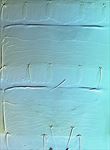
sacchari head & pronotum

sacchari meso & metanota

sacchari tergites VII-IX

sacchari sternites VI-VII
Generic diagnosis
Macropterous. Head wider than long; mouth-cone moderately long but not reaching mesosternum; maxillary palps 3-segmented; eyes large, with or without pigmented facets; ocellar setae I present, two to four pairs of pre-ocellar setae, setae III about as long as longitudinal diameter of hind ocellus; three pairs of short postocular setae. Antennae 8-segmented, segment I without paired dorso-apical setae, III and IV with sense-cones forked; III–VI usually with some microtrichial rows on both surfaces. Pronotum as long as wide or wider than long; six or seven pairs of posteromarginal setae, one pair slightly longer and stouter. Mesonotum with median pair of setae far from posterior margin. Metanotum with longitudinal anastomosing striae, nearly parallel laterally; median pair of setae far from or at anterior margin; campaniform sensilla present or absent. Fore wing narrow, first vein with long gap in setal row, six to seven basal and three distal setae; second vein with three to five widely spaced setae; clavus with 5 veinal and 1 discal setae, posteromarginal fringe cilia wavy. Prosternal ferna not divided medially; basantra membranous, without setae. Mesosternum with sternopleural sutures reaching anterior margin; endofurca without spinula. Metasternal endofurca without spinula. Tarsi 2-segmented. Tergites without ctenidia, weakly separate from lateroterites; S3 setae mesad of lateral margin on tergites III–VII; tergites II–VIII with craspeda broadly continuous; IX with MD setae present, and two pairs of campaniform sensilla; X with median split almost complete; sternites without discal setae; II–VII with craspeda lobed; III–VII with three pairs of posteromarginal setae, II with two pairs; sternite VII without craspeda at middle, S1 setae in front of margin, S1 and S2 arise close together medially and distant from S3.
Male similar to female; fore tibia sometimes with apical claw; tergal craspeda often with teeth directed laterally; tergite IX often with S1 setae stout and arising from single tubercle; sternites without pore plates.
Biological data
The members of this genus seem to be associated mainly with various species of Poaceae (Mound, 2011).
Distribution data
This is a widespread Old World genus, with species found from Africa to northern Australia
Nomenclatural data
Exothrips Priesner, 1939: 162. Type species Exothrips monstrosus Priesner, 1939, by monotypy.
This genus comprises 20 species (ThripsWiki, 2020), but only one is recorded from China:
sacchari (Moulton, 1936: 265). (Anaphothrips: Dantabahuthrips)
Relationship data
Thripidae sub-family Thripinae: this is a diverse group involving more than 230 genera. In the unusual chaetotaxy of sternite VII in female this genus is related to Rhamphothrips, the differences being limited to the relative sizes of the head, mouth cone and pronotum. The head of Rhamphothrips species is smaller but with a mouth cone that extends across the prosternum.
References
Mound LA (2011) Grass-dependent Thysanoptera of the family Thripidae from Australia. Zootaxa 3964: 1–40.
ThripsWiki (2020) ThripsWiki - providing information on the World's thrips. <http://thrips.info/wiki/Main_Page>